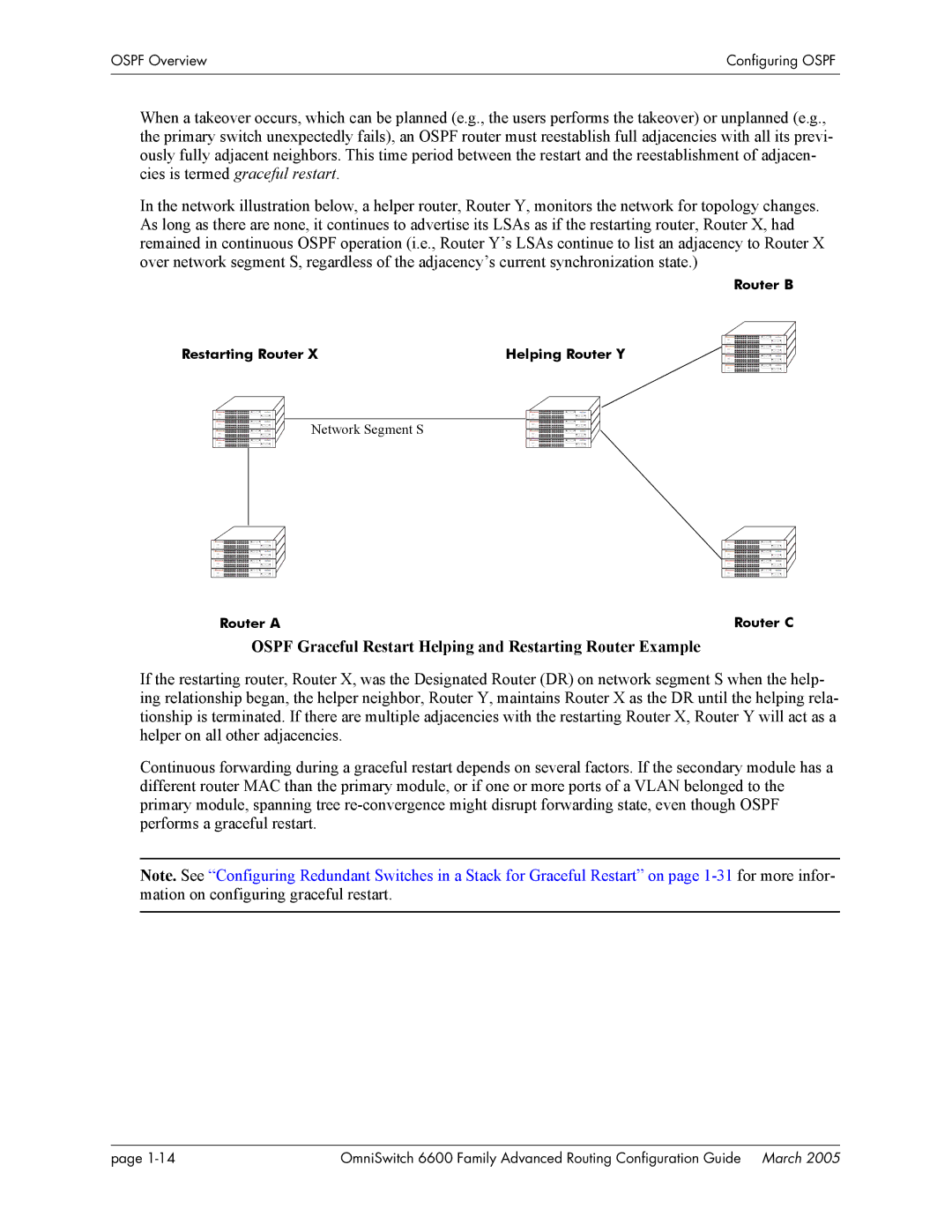
OSPF Overview | Configuring OSPF |
|
|
|
|
When a takeover occurs, which can be planned (e.g., the users performs the takeover) or unplanned (e.g., the primary switch unexpectedly fails), an OSPF router must reestablish full adjacencies with all its previ- ously fully adjacent neighbors. This time period between the restart and the reestablishment of adjacen- cies is termed graceful restart.
In the network illustration below, a helper router, Router Y, monitors the network for topology changes. As long as there are none, it continues to advertise its LSAs as if the restarting router, Router X, had remained in continuous OSPF operation (i.e., Router Y’s LSAs continue to list an adjacency to Router X over network segment S, regardless of the adjacency’s current synchronization state.)
Router B
Restarting Router X | Helping Router Y |
Network Segment S |
Router A | Router C |
OSPF Graceful Restart Helping and Restarting Router Example
If the restarting router, Router X, was the Designated Router (DR) on network segment S when the help- ing relationship began, the helper neighbor, Router Y, maintains Router X as the DR until the helping rela- tionship is terminated. If there are multiple adjacencies with the restarting Router X, Router Y will act as a helper on all other adjacencies.
Continuous forwarding during a graceful restart depends on several factors. If the secondary module has a different router MAC than the primary module, or if one or more ports of a VLAN belonged to the primary module, spanning tree
Note. See “Configuring Redundant Switches in a Stack for Graceful Restart” on page
page | OmniSwitch 6600 Family Advanced Routing Configuration Guide March 2005 |
